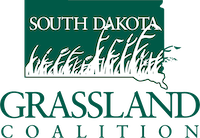Meet the silent intruder – Yellow Bluestem.
Yellow bluestem (Bothriochloa ischaemum) is an invasive grass species that was introduced to the United States from southern Europe and Asia in the early 1900s.
Origins:
Yellow bluestem is not native to North America. It was brought to the United States with the intention of using it as a forage grass and for erosion control. It was introduced for its adaptability and ability to establish quickly in various environments.
Spread:
Yellow bluestem spreads through both root expansion and seed production, making it a resilient and invasive species. It has a creeping root system that enables it to form dense mats, outcompeting native grasses. Its seeds are also dispersed by wind, water, and animals, further contributing to its spread.
Yellow bluestem is a concern for rangelands due to several reasons:
Invasive Nature: Yellow bluestem is highly invasive and can rapidly colonize areas, displacing native grasses and forbs. Its aggressive growth hinders the diversity and health of native plant communities.
Reduced Forage Quality: Yellow bluestem is generally less palatable and offers lower forage quality compared to many native grasses. This can affect the nutrition and health of livestock and wildlife that graze on these lands.
Allelopathy: Yellow bluestem exhibits allelopathic properties, releasing chemicals that inhibit the germination and growth of other plant species. This limits the establishment of desirable native vegetation.
Erosion Control Challenges: While it was introduced for erosion control, it can become a problem itself. As it forms dense stands, it can interfere with natural soil stabilization and potentially increase erosion in affected areas.
Reduction of Biodiversity: The spread of yellow bluestem can reduce the biodiversity of rangeland ecosystems, as it outcompetes native species that provide habitat and food for wildlife.
Herbicide treatments, programmed fires, and targeted grazing activities are commonly used to manage and control yellow bluestem. It is critical to address its presence in rangelands in order to maintain the ecological balance and forage quality of these essential ecosystems.
